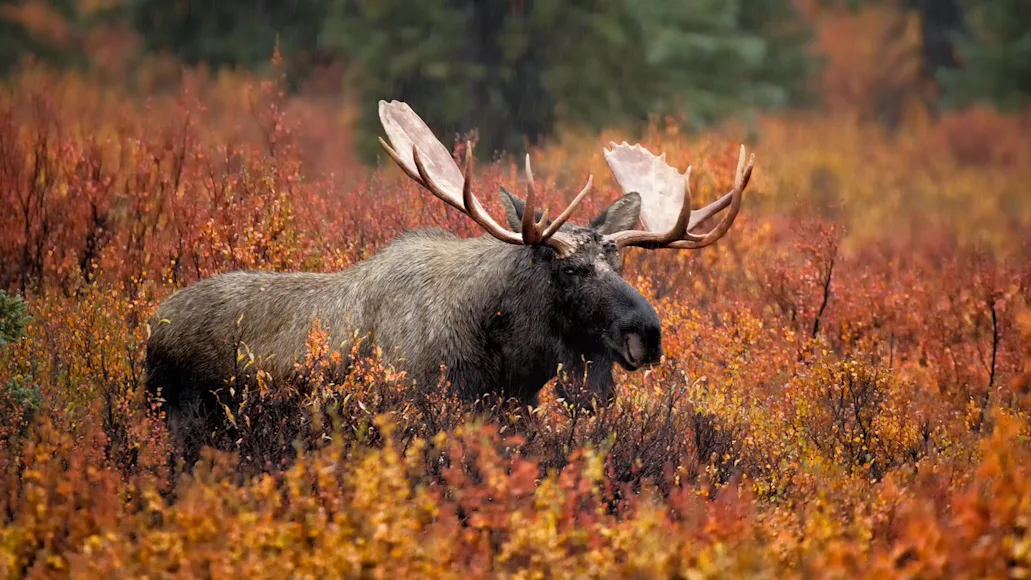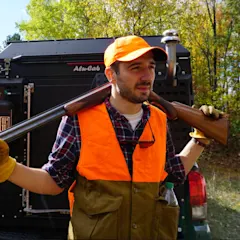How big are moose? Well, here are a few comparisons: A full-grown Alasaka bull moose is heavier than 10 kegs of beer, a telephone pole, or a smart car. It’s as tall as the average front door or the average NBA player, and about 8 inches taller than Jason Momoa. But that’s just the Alaska moose.
There are four subspecies of moose in North America, and they come in a range of sizes. There’s the Alaska moose, the Northwestern moose, the eastern moose, and the Shiras moose. All of them are huge compared to most other game animals on the continent (which is why the best cartridges for moose hunting
tend to be big as well.) In fact, moose are the biggest of all deer species in the world.
.embed-container { position: relative; padding-bottom: 56.25%; height: 0; overflow: hidden; max-width: 100%; } .embed-container iframe, .embed-container object, .embed-container embed { position: absolute; top: 0; left: 0; width: 100%; height: 100%; }
In North America, Shiras moose are on the low end of the moose size scale. Bulls can weigh as much as 1,200 pounds and stand 6 feet at the shoulder. The biggest moose, the Alaska moose (also known as Yukon moose in Canada), can weigh around 1,600 pounds and stand almost 7 feet tall. Record Alaska moose taken by hunters have weighed around 1,800 pounds with the heaviest taken in 1897. It tipped the scales at 1,808 pounds and was 7.6 feet tall according to the Guinness Book of World Records
. To give you a better idea of how big moose are by subspecies, here’s a breakdown of the four kinds of moose you’ll encounter in the U.S. and Canada.
Table of Contents
Moose Size Comparison by Subpecies
How Big Are Moose Compared to Other Animals?
Moose vs. Human Size Comparison
Five Cool Facts About Moose
Size Comparison by Subspecies
You can hunt all four subspecies of moose in North America. Their ranges span from the Northeast to the Rockies and north through Canada and Alaska. There are also four subspecies of moose generally referred to as “elk” in Europe, but we’ll just cover North American moose here. Moose all over the globe are generally found in colder northern climates.
1) Alaska Moose (Alces alces gigas)
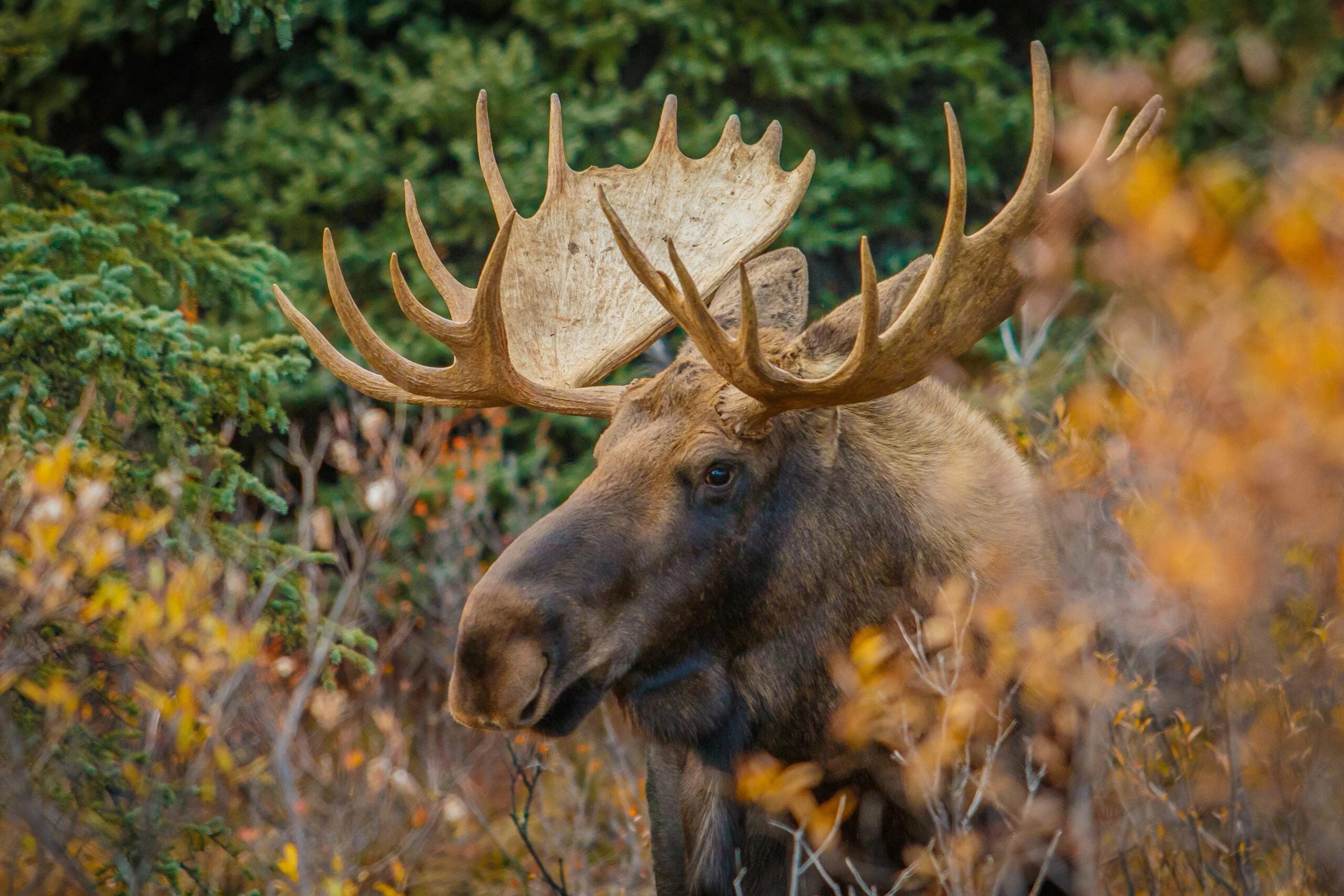
The Alaska moose is the largest moose in the world. LindaPhotography / Adobe Stock
The Alaska moose is also known as the Yukon moose in Canada and the “giant moose” because it is the biggest of all the subspecies. These moose live in boreal and mixed deciduous forests in most of Alaska and the Western Yukon. Alaska moose live mostly on forbs and willow and birch shoots. Big bulls typically stand just shy of 7 feet at the shoulder and weigh between 1,200 and 1,600 pounds. Females can weigh over 1,000 pounds.
Alaska moose also sport some impressive headgear. The largest bull according to Safari Club International (SCI) records was taken in September 1999 by Debra Card near Cordova, Alaska. It weighed an incredible 1,800 pounds (that’s almost as much as two grand pianos). It had a 74 2/8-inch spread, 39 total points, and scored 731 ⅛ inches on the SCI scale. For comparison, the average whitetail doe is 71 inches long, meaning one could fit comfortably within Card’s moose’s antlers.
The biggest Alaska moose in the Boone & Crockett (B&C) books came from the Lower Yukon River in Alaska. Rex J. Nick shot the 266-4/8-inch B&C bull with a 300 Win Mag in 2010. It only broke the previous record by 2-7/8 points.
2) Northwestern Moose (Alces alces andersoni)
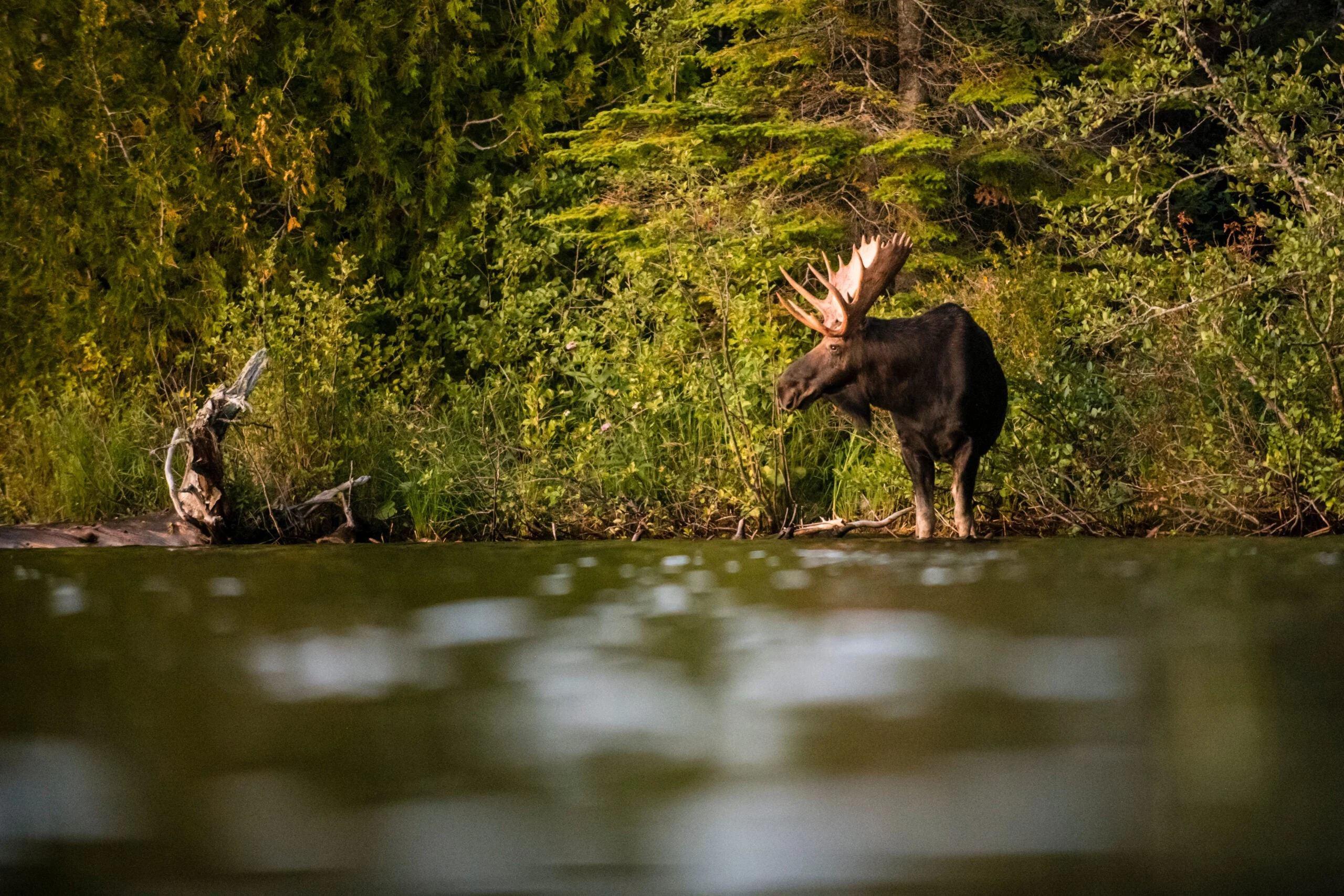
A Northwestern bull moose in Tobin Harbor, Isle Royale, Michigan. Tandem Stock / Adobe Stock
Also known as the Western moose, the Northwestern moose lives in the boreal forests of western Canada and some parts of Minnesota, Michigan, North Dakota, and Wisconsin. They were also introduced to New Zealand. It is the second-largest moose subspecies in North America, right behind the Alaskan moose. Northwestern moose can measure over 6½ feet at the shoulder and weigh nearly 1,600 pounds. These big moose consume almost 10,000 calories per day, which equates to around 70 pounds of vegetation.
Doug Rehbein took the largest Northwestern moose in the SCI record books in 1998, in the Cassiar Mountains of British Columbia. The bull scored 557 inches with a 64-2/8-inch outside spread. Surprisingly, it only had 12 points on one antler and 10 on the other.
3) Eastern Moose (Alces alces americana)
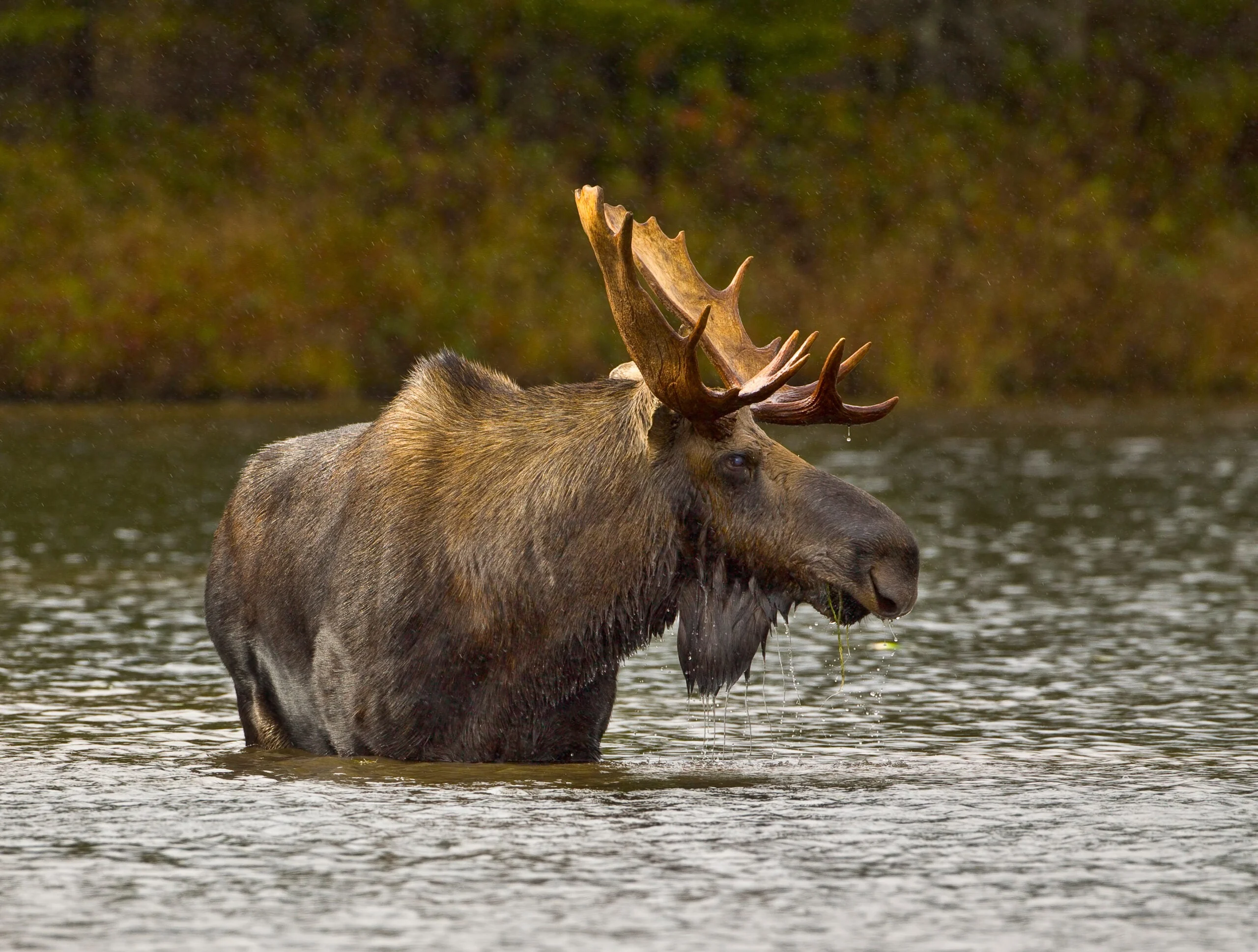
An eastern moose wades into a pond in Baxter State Park, Maine. richardseeley / Adobe Stock
Eastern moose are found in Maine, New York, Connecticut, Vermont, New Hampshire, Massachusetts, Nova Scotia, Quebec, New Brunswick, and Newfoundland. Big eastern bulls can weigh up to 1,400 pounds and stand 6 feet at the shoulder. Your can apply for tags to hunt eastern moose in the continental U.S., but the drawing odds can be tough. Eastern moose hunters on a budget who want to purchase tags over the counter should look into Newfoundland and other parts of eastern Canada.
The biggest eastern moose in the SCI books was shot in 2011 by Jeremy Boileau. The behemoth scored 666 3/8 inches and sported 20 points on each antler. Boileau shot the bull with a rifle in Quebec, Canada, and it beat out the next biggest eastern moose by 175 inches.
4) Shiras Moose (Alces alces shirasi)
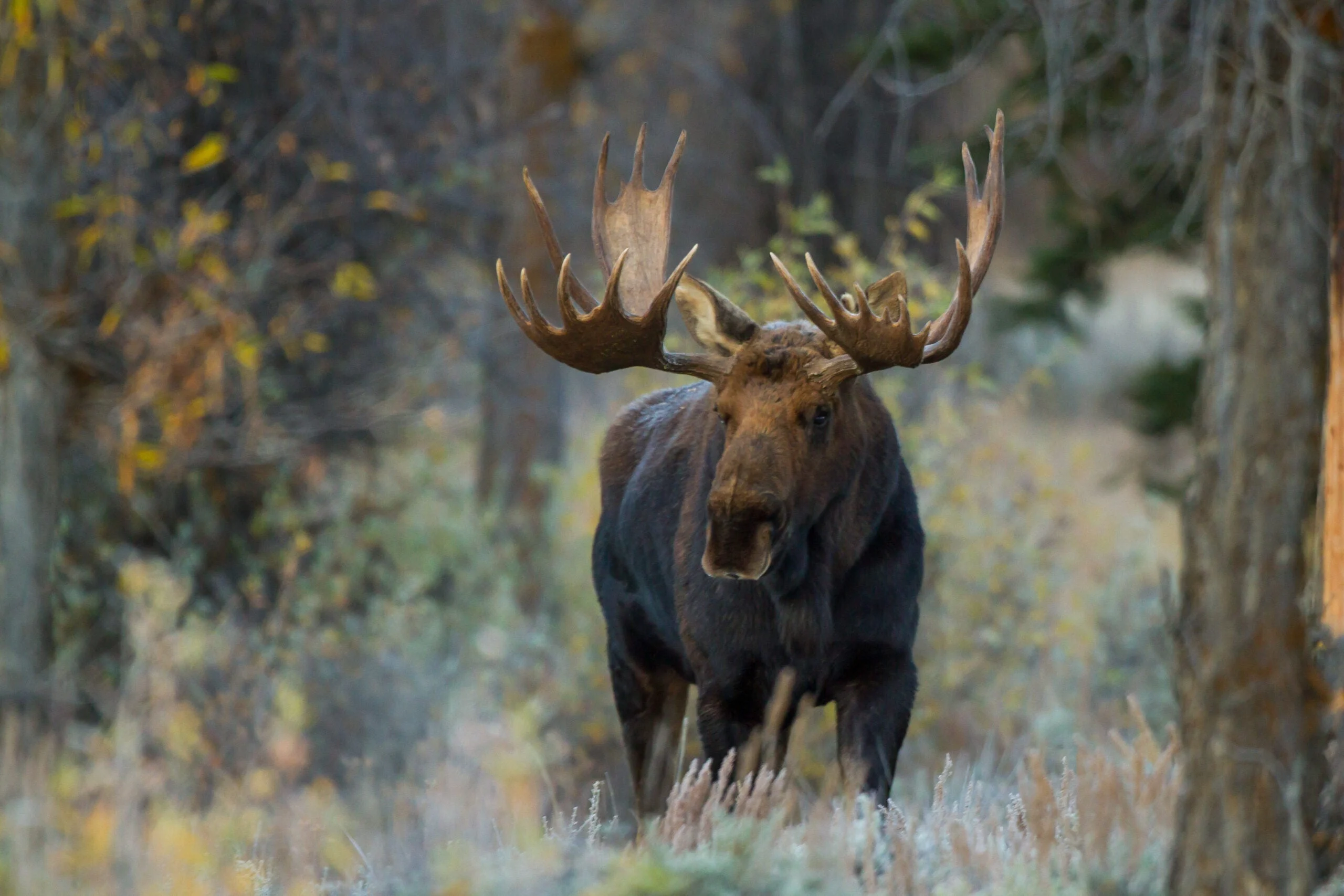
Shiras moose are the smallest moose in North America. David / Adobe Stock
Shiras moose occupy the southernmost part of moose country in North America. They live in the Rocky Mountains of the western U.S. and Canada. They are also the smallest moose that live in North America, but don’t let that fool you. Shiras bulls can weigh up to 1,200 pounds and stand 6 feet at the shoulder.
A hunter named Jim Hall set the SCI record for the largest Shiras moose with a bull taken in Washington in 2018. It weighed between 650 and 700 pounds and scored 504 7/8 inches. John M. Oakley took the B&C record Shiras with a .270 in 1952. He took the bull in Green River Lake, Wyoming and it scored 205 4/8 points on the B&C scale.
Size Compared to Other Animals
So, how big are moose when compared to other animals? Here are a few examples, from elephants to horses.
Compared to an Elephant
At nearly 7 feet tall and 1,600 pounds, an average bull Alaska moose is dwarfed by the biggest of all land animals, the African elephant. Elephants grow up to 13 feet tall and weigh from 5,000 to 14,000 pounds.
Compared to Bison
Bison don’t grow as tall as moose, but they do get heavier. That said, they don’t beat the moose by much, especially when you consider Debra Card’s record Alaska moose weighed 1,800 pounds. Bison can grow to around 2,000 pounds and stand 6 feet at the shoulder.
Compared to Elk
Bull moose knock bull elk out of the park. A big elk can weigh just over 1,000 pounds with a shoulder height of around 5 feet tall. That’s about the same size as a female Alaska moose. Even a bull Shiras moose is bigger than a bull elk.
Compared to a Horse
The average quarter horse is around the size of a bull Shiras moose at 1,200 pounds. Fun fact, a New Brunswick man named John Connell actually saddled and regularly rode a moose
in the early 1900s. The biggest horse ever was an English shire gelding named Sampson. It was born in Bedfordshire U.K. in 1846 and weighed a whopping 3,359 pounds. At 7 ft 2.5 inches tall at the shoulder, Sampson was a few inches shorter than the biggest Alaska bull moose on record.
Compared to Humans

A moose print in the snow compared to a human foot. Grigory Bruev / Adobe Stock
When it comes to height, the tallest human ever (Robert Pershing Wadlow, 8 feet 11 inches) beats the tallest moose ever (7 foot 7 inches tall). Compared to the average height of a human being, the average bull moose has us beat by around a foot. In terms of weight, the heaviest moose on record beats the heaviest human (Jon Brower Minnoch, who at one point weighed approximately 1,400 pounds) by about 400 pounds. When Alaska moose are born, they weigh about 28 pounds, which is about as much as a 3-year-old person. After that, moose start packing on the pounds fast. They start by gaining 2 pounds per day and later put on 5 pounds a day. By comparison, the average human child will put on about 5 pounds per year between the ages of 2 and 5.
Five Cool Facts
1) Moose antlers are among the fastest-growing animal tissues on Earth.
Moose shed their antlers annually, like other deer. What’s most impressive about moose antlers, though, is how quickly they grow back. Moose may put on bone the fastest out of all deer, adding up to a pound of antler per day and up to 80 pounds over the course of a summer.
2) Moose injure more people than bears do.
Moose aren’t out to get us; they’re just big, and they can be territorial. There are also more moose than bears in the wild. In Alaska, for example, moose injure five to 10 people every year on average. That’s more than both grizzly and black bear attacks statewide.
3) They are the biggest of all deer.
We said it before and we’ll say it again. Moose are deer and they’re the biggest deer out there. It would take 53 South American pudus—the smallest of all deer—to weigh as much as one bull moose. On average, moose weigh around 10 times more than the average whitetail. That’s a lot of venison.
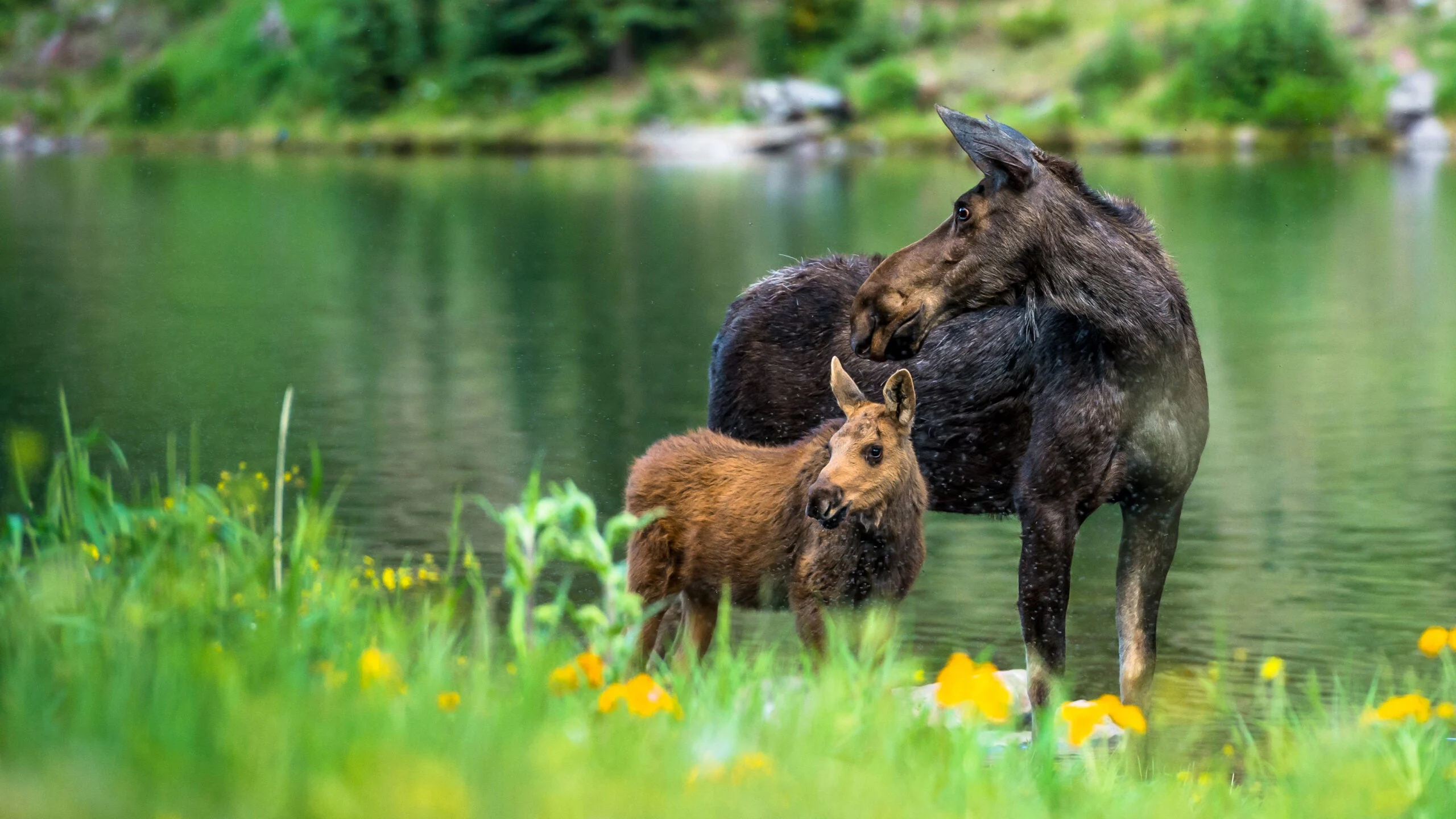
Moose calves are fast runners and good swimmers even when they’re only days old. David Le Saint / Adobe Stock
4) A five-day-old moose calf can outrun a human.
Baby moose grow up fast in the wild with all manner of predators out to get them. Just five days after being born, a moose calf can run faster than the average human top speed of 8 miles per hour. Adult moose can charge at around 35 mph for short distances. That’s 10 mph faster than the speed limit in New York City and 8 mph faster than Usain Bolt’s average pace when he set the 100-meter dash world record.
5) They have terrible eyesight.
Moose can’t see very well, but they compensate for this with incredible senses of smell and hearing. Researchers have found
that moose can separate smells and determine the directions of smells with their big nostrils and sensitive nasal cavities. Scientists also believe that dish-shaped moose antlers help amplify the sounds of calling females, giving the solitary bulls a boost in hearing come mating season.

